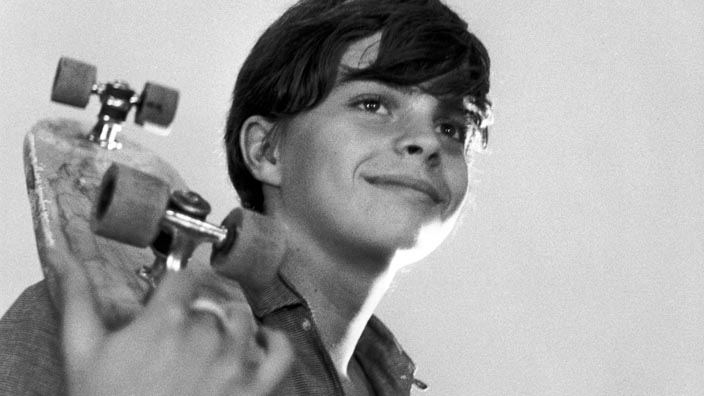
#MyNFB: The Devil’s Toy
#MyNFB: The Devil’s Toy
In a world overwhelmed with stimuli and fast-paced entertainment, what could a short black-and-white documentary from the 1960s on skateboarding possibly have to offer?
Everything.
We’ve all seen public service documentaries warning us earnestly about various dangers, complete with old-timey voice-over.
This film shows us in seconds that it is something different. It may be one of the NFB’s biggest early contributions to the political and artistic ferment in Montreal at the time. In fact, the city of Montreal plays a crucial role. Family, community and social hierarchy all play their parts. The skateboard, the “devil’s toy,” is the star attraction, but the film also shows us couples, families, toddlers, dogs, and policemen.
Skateboarding, the rouli-roulant, is emblematic of civil disobedience. The first title announces that the documentary is dedicated “to all victims of intolerance,” which hints that the film may not be entirely on the side of authority and regulation. The skateboarders’ gathering to skate freely in public places is presented as an image of countercultural action. The skateboard is a weapon.
The Devil’s Toy, Claude Jutra, provided by the National Film Board of Canada
I’m a student, and I work in community radio. I applaud and frequently obsess over the last remaining “punks” in the current scene. My boss at the radio station is an established Montreal musician and a major skater, and although the movie was before his time, he showed it to me as a cult classic.
Nowadays the “deck” is seen as a modest but reliable means of transportation. But despite more normalized social standards, its countercultural identity is still upheld by determined youths and viewed negatively by some (like the authorities).
In the documentary, skateboarders are confronted by the police, and told to take their activities off the street. A bylaw is passed to suppress any and all rebellion. But the board needs space, needs ramps and bumps and ridges to progress, angles to travel; the camera uses shots as if from the skateboard’s perspective.
The music, by Pierre F. Brault with vocals by Genevieve Bujold, also takes the side of the skateboard and the youths, accentuating their freedom outdoors and their unhappiness at being moved into a confined indoor arena. At the 11th minute of the film we hear a classic sad-trombone womp-womp—because the skateboarders have been exiled to a rink, where the floor has no slant and there is no room for speed or skill.
The 1960s in Quebec were a period of sustained change. The Quiet Revolution began in 1960 under the Liberal government of Jean Lesage, and gathered strength through the decade, but in the year this film was made, 1966, the nationalist conservative Union Nationale regained power. With the rise of right-wing populism it seemed the dark times had returned.
This film expresses youthful revolt. It could not have appeared at a better time.

Mariam Salaymeh was born in Kitchener, Ontario, to Palestinian and Bulgarian parents. She fell in love with multimedia after some formative years in Prague. Cordell Barker’s The Cat Came Back was her introduction, at age 4, to the NFB’s and Canada’s expressive body of culture. She’s particularly fond of the NFB’s collection of films about industrial neighbourhoods. Mariam is a student at McGill University and works in radio.



